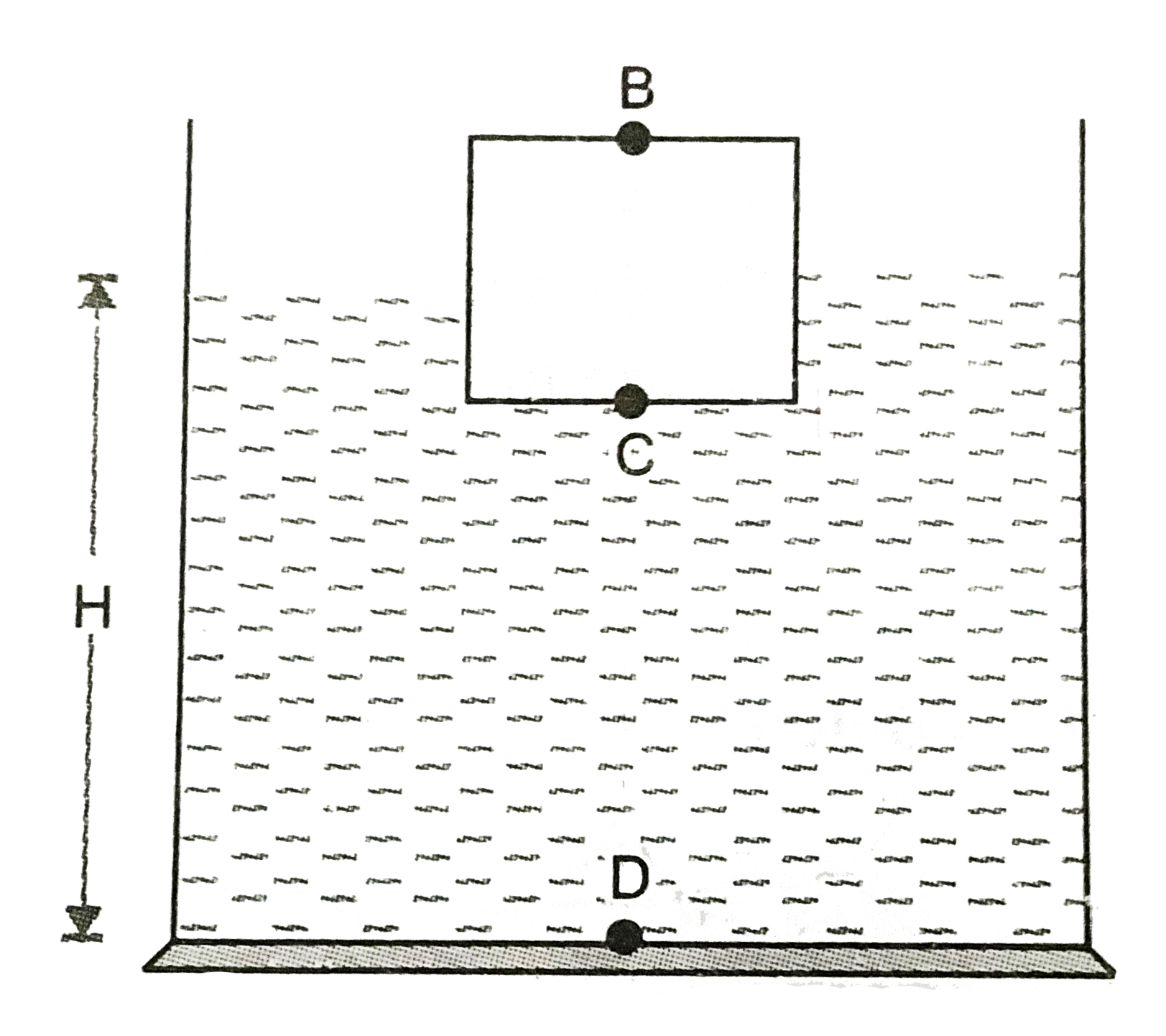In the figure shown the velocity and pressure of the liquid at the cross section (2) are given by (If is the atmospheric pressure).

The correct Answer is:C
Velocity of the liquid just after coming out of section is
…..i
Using continuity equatioin at equation and section
Now using Beroulli's theorem at section and at the opening end of pipe
Topper's Solved these Questions
- FLUID MECHANICSBook:CENGAGE PHYSICSChapter:FLUID MECHANICSExercise:Multipe Correct
Explore 15 Videos
- FLUID MECHANICSBook:CENGAGE PHYSICSChapter:FLUID MECHANICSExercise:Assertion-Reasoning
Explore 8 Videos
- FLUID MECHANICSBook:CENGAGE PHYSICSChapter:FLUID MECHANICSExercise:Subjective
Explore 25 Videos
- DIMENSIONS & MEASUREMENTBook:CENGAGE PHYSICSChapter:DIMENSIONS & MEASUREMENTExercise:Integer
Explore 2 Videos
- GRAVITATIONBook:CENGAGE PHYSICSChapter:GRAVITATIONExercise:INTEGER_TYPE
Explore 1 Video
Similar Questions
A siphon tube is discharging a liquid of specific gravity 0.9 from a reservoir as shown in the figure.

(a) Find the velocity of the liquid through the siphon.
(b) Find the pressure at the highest point B.
(c ) Find the pressure at point C.
View SolutionThe pressure of confined air is p. If the atmospheric pressure is P, then :-

View Solution
Knowledge Check
For the L-shaped vessel shown in the figure, determine the value of acceleration a so that pressure at point A becomes equal to p02? (p0 is the atmospheric pressure)
 AgBg2+p02ρHCp02ρHDρ02ρH+g
AgBg2+p02ρHCp02ρHDρ02ρH+gFigure shows a siphon. Choose the wrong statement.

(p0 = atmospheric pressure)ASiphon works when h>0BPressure at point 2 inside the tube is p2=p0−ρghCPressure at point 3 is p0DNone of the aboveA manometer reads the pressure of a gas in an enclosure as shown in the figure. The absolute and gauge pressure of the gas in cm of mercury is (take atmospheric pressure =76 cm of mercury)
A76,20B20,76C96,20D20,96
A cylindrical vessel containing a liquid is closed by a smooth piston of mass "100g" as shown in the figure.The radius of the piston is "10cm" .If the atmospheric pressure is P0 then the pressure difference of the liquid just below the piston and the atmospheric pressure is (g=10ms2)
View SolutionA liquid of density ρ is filled in a beaker of cross section A to a height H and then a cylinder of mass M and cross-section a is made to float in it as shown in

If the atmospheric pressure is P0 find the pressure (a) at the top face B of the cylinder (b) at the bottom face C of the cylinder and (c ) at the base D of the beaker. (d) Can ever these pressure be equal ?
View SolutionA pipe of diameter D is connected to a water tank of large cross-sectional area in which water is maintained at a height H as shown in the figure. A nozzle of diameter 'd' fitted at the end of the pipe discharges water into the atmosphere. Find the flow rate, given that the density of water is p. Also find pressure at point C. (P0 is the atmosoheric pressure)

View SolutionThe given figure shows the cross-section of a plant.

The given cross-section belongs to a
View SolutionThe air tight and smooth piston of a cylindrical vessel are connected with a string as shown. Initially pressure and temperature of the gas are P0 and T0. The atmospheric pressure is also P0. At a later time, tension in the string is 38P0A where A is cthe cross-sectional are of the cylinder. at this time, the temperature of the gas has become.

View Solution

